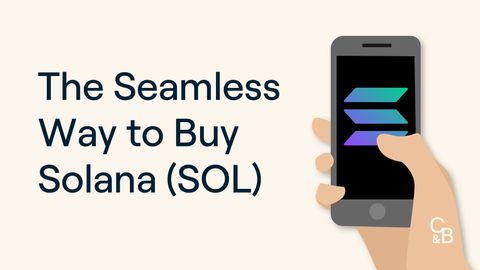Key Points
- The XRP Ledger (XRPL) was first launched in 2012 by developers David Schwartz, Jed McCaleb, and Arthur Britto.
- XRP is used for peer-to-peer payments on the XRPL due to fast block times, high throughput and quick transactions.
- Ripple, the technology company that developed XRP, landed multiple wins in court against the U.S. Securities and Exchange Commission (SEC) which filed to sue Ripple and charge its executives, too. These rulings continue to set and inform precedent for cryptocurrency legislation in the U.S.
- Many financial institutions worldwide—such as NAB, Bank of America, and more—use Ripple’s technology, Ripple Connect, to transact globally.
XRP is one of the largest cryptocurrencies in the world with a market cap over $35 billion, making it the #5 largest of any crypto project by market capitalisation at time of writing.
But what is XRP, how does it work and why does it have value?
This article will explore the core elements of Ripple, its purpose, and how its currency, XRP, differs from other digital assets.
What is Ripple?
Founded in 2004, Ripple (originally Ripplepay) is a fintech company based in San Francisco. Even before the company delved into crypto in 2012, its core focus was largely the same: to improve upon the current payment settlement systems for international transactions.
After entering crypto markets with the launch of its native token, XRP, Ripple has built out an entire global payments network, known as RippleNet. The network offers real-time gross settlements for financial institutions, and other features to make banking across borders simple and affordable.
Designed from the start to replace one of the largest money transfer networks, SWIFT, RippleNET can facilitate exchange between a variety of currencies—not limited to fiat—and including the likes of Bitcoin and even commodities, like gold. Ripple charges users a small transaction fee (in XRP) to use the network.
What is XRP?
Founded in 2012, XRP is a digital asset created to drive innovation across the financial payments space. It is the native token on the XRP Ledger (XRPL) - a distributed, open-source, permissionless blockchain maintained by a network of peer-to-peer servers (known as unique nodes).
XRP functions as a mechanism of exchange between two different currencies or networks, and can be sent directly without the need for an intermediary. This makes it a convenient tool for bridging two currencies in a matter of seconds, not days. This saves time and simplifies the process of international transactions. Banks in various countries have also adopted XRP for routine hawala transfers.
At the time of this publication, XRP is within the top 5 largest crypto assets with a market cap of over $35 billion.
Recommended reading: 6 Types of Altcoins & Their Uses
Are Ripple and XRP the Same?
When talking about XRP one might often hear it used interchangeably with Ripple. However, the two are quite different.
Ripple is a company that provides a blockchain-based digital payment network for its users. XRP is the crypto asset that facilitates payments on this network. XRPL is the software ledger where transactions with XRP are recorded.
The company has undergone multiple rebrandings to reflect changes in ownership or direction of the project. In 2023 Ripple acquired crypto businesses Metaco and then Fortress Trust to “support our existing lines of business — specifically in terms of improving the customer experience”. Throughout the business’s evolution, one thing that has remained consistent is the ticker symbol XRP.
How does XRP and the XRP Ledger Work?
The XRP Ledger
The XRPL consensus model is built upon a core principle: a little trust goes a long way.
Unlike Bitcoin’s Proof of Work or Ethereum’s Proof of Stake, the XRP Ledger doesn’t use mining or staking to validate transactions. Rather, it allows trusted, permissioned servers to create consensus on the network. These servers, or unique nodes, maintain a “unique node list”, a list of nodes that the network deems as trustworthy.
If 80% of nodes deem a transaction to be valid, a unique node can then proceed with validating that transaction.
In the past the XRPL has experienced out-of-sync issues, leading to downtime across the network. When one node on this list is compromised, the effects can spill over to other nodes, further slowing down the network.
XRP - The Native Token
The total supply of XRP—100 billion—was created and distributed to individuals and companies at the launch of XRPL. Unlike other consensus mechanisms, nodes do not earn rewards for maintaining the correct version of the ledger.
There are some customers on Ripple’s Digital Payment Network, RippleNet, that desire to send funds without a pre-funded account. Ripple makes this possible through their on-demand liquidity service. In this service, XRP along with a pool of other digital assets (e.g. Bitcoin, Ether, Ethereum Classic, Bitcoin Cash, and Litecoin), is used to provide liquidity for these transactions.
When parties have different preferred methods of sending or receiving money, or use different currencies, RippleNet acts as an intermediary for their transaction. As both parties are using different currencies to transact, no physical money moves during the process. Rather, the transaction is conducted in XRP equalling the value of the money being sent. The network also charges a small fee (in XRP) to complete the transaction, but it’s minuscule when compared to other traditional international payment networks, such as SWIFT.
How is XRP different from Bitcoin?
There are many core differences between XRP and Bitcoin. Firstly, Bitcoin achieves network consensus by using a Proof of Work (PoW) model to validate transactions, whereas XRP uses a consensus protocol across participating nodes to validate transactions through a vote. Given that this method is less energy intensive, some might argue that XRP is more environmentally sustainable than Bitcoin.
Additionally, Bitcoins are released into the network through mining. XRP was pre-mined at launch. A smart contract—not miner activity—controls the release of any future tokens on the network.
Lastly, although both projects are open source, XRP was created and distributed by a privately-owned company, whereas Bitcoin is not owned by any one individual or organisation.
Advantages & Disadvantages of XRP
XRP aims to improve upon the way that banks and individuals transact money across borders. Let’s explore what sets XRP apart from other digital assets, as well as some challenges that it is trying to overcome.
Advantages
- Low Fees: Using XRP for cross-border transactions eliminates the need for a third-party intermediary (such as a bank). Users in different countries can transact while avoiding currency conversion fees often charged by banks. If using traditional methods, these fees can reach as high as US$50 in some cases.
- Fast Transaction Times: Cross-border transactions are often subject to a stricter review process than transactions made within a country’s borders. Financial institutions often will delay a transaction until this process is completed. The Ripple network can facilitate highly liquid transactions without the need for an institutional go-between, making it a much faster option to send money between countries.
- Partnerships With Leading Banks: Over 100 financial institutions have joined the Ripple network, showing that it could replace the outdated cross-border payment model currently in use. These include: Santander, AMEX, AirWallex, PNC, and Mitsubishi UFJ. While these institutions don’t need to use XRP to access RippleNet, some do use the network’s on-demand liquidity service, which does use XRP.
- Staying Power: XRP has been in existence for 10 years, only 3 years shy of Bitcoin’s introduction to the public. While other altcoins have come and gone during these early days of crypto, XRP seems to have a considerable Lindy Effect, creating a staying power through every bear market it survives. Although past performance is in no way an indicator of future results, XRP’s ability to endure market swings is a feature that suggests it isn’t going away anytime soon.
- Eco-Friendly: Because XRP uses a consensus protocol that requires relatively low computational power from its nodes, it can be considered a sustainable means of exchange. Ripple is also taking steps to become carbon neutral by 2030.
Disadvantages
- Circulating Supply Control: Compared to other crypto projects, which may release coins through mining or other methods, Ripple has more influence over the value of XRP, choosing when and how more coins are released. With this level of control, one could argue that Ripple is the principal market maker for XRP, using the sales of the asset to maintain the XRP Ledger and Ripple’s other technologies. With Ripple controlling over 55% of the total XRP supply, is not far from plausible to some.
- Technically Centralised: XRP was created and released by the privately-owned Ripple. The network also has a lower-than-average validator count. A low validator count is often correlated with higher centralisation, leading some to believe the blockchain is more centralised than decentralised. Additionally, Ripple, not network participants, decides whether validators are deemed trustworthy. Although the company uses blockchain technology, many argue that it still operates as a centralised entity. This goes against the core philosophy of most decentralised blockchains.
Who Created XRP?
Way back in 2004, before Satoshi Nakamoto and Bitcoin, Ryan Fugger created Ripplepay. Ripplepay was in concept what Ripple is today—a network that facilitates cross-border transactions—just without blockchain technology.
After the launch of Bitcoin, three like-minded developers—David Schwartz, Jed McCaleb, and Arthur Britto—sought to build upon the idea of Bitcoin, creating a borderless cryptocurrency that didn’t need a significant amount of computing power for nodes to validate. They bought Ripplepay from Fugger and used the source code to create the XRP Ledger and subsequently, XRP in 2012.
Upon launch, 80% of XRP tokens were gifted to a new company which would eventually become known as Ripple. The remaining supply was sold to investors and financial institutions to fund further development of the project.
SEC v. Ripple
Ripple Labs Inc achieved a landmark legal victory as a U.S. judge ruled that the company did not violate federal securities law by selling its XRP token on public exchanges. This decision boosted the value of XRP by 75% and may offer support to other crypto firms battling the SEC's jurisdiction. While the ruling was favourable to Ripple, the judge also found that Ripple's sales of $728.9 million of XRP to hedge funds and sophisticated buyers constituted unregistered sales of securities.
The SEC secured a partial win in the case as the judge determined that Ripple's marketing aimed at institutional investors promoted a speculative value proposition tied to the company's efforts, making it subject to securities regulations.
The SEC lost an appeal against the decision; not long after the SEC came up short again after its charges against Ripple CEO Brad Garlinghouse and executive chair Chris Larsen, were dismissed.
The ruling may benefit Coinbase's SEC case, and it has led to calls for Congress to establish clear legislation governing digital assets.
How to Invest in XRP (XRP) in 2023
Buying XRP
The easiest way to buy XRP is through a brokerage like Caleb & Brown. We make purchasing XRP easy and accessible whether you use fiat currency or crypto. Trusted by over 25,000 investors across 100 countries, our dedicated team of experts works around the clock to carry out all your crypto trades. If you’re ready to dive in and make your first XRP purchase, open an account with us for free today.
Recommended reading: Common Crypto Investing Strategies Every Investor Should Know
Selling XRP
Selling your XRP with Caleb & Brown is as simple as buying. You can trade your XRP for any of the 100s of assets available through our brokerage.
Should you decide to exchange your XRP for fiat currency, there are $0 withdrawal fees as well.
Recommended reading: How to Invest in Crypto
How to Store XRP
There are multiple ways of storing XRP, from a cold wallet, hot wallet or with a custodian. Individual risk tolerance and preferences will determine the method employed by most users.
Many of these storage methods can seem complex, especially if you are not tech-savvy. Caleb & Brown provides end-to-end custody solutions for hassle-free storage and peace of mind investing. We have a battle-tested security infrastructure, through the leading asset security platform Fireblocks. All clients receive a free security consultation to ensure they follow security best practices.
Recommended reading: Crypto Security Part 1: Best Practices
FAQs
Is XRP a good investment?
Choosing to buy XRP depends largely on your investment goals. Investors also weigh a variety of factors before choosing a project to invest in. Ultimately, it’s up to you to determine whether you decide to invest in XRP, and what strategies you use to maintain that investment.
At Caleb & Brown, we follow the facts; not opinions or trends. We encourage you to do your own independent research before making an investment. Our team of crypto experts are more than willing to answer any questions you have along the way.
Why does XRP have value?
XRP gets its value from various factors, but mostly from Ripple’s ability to work with financial institutions worldwide, and from its ability to quickly and cost-effectively be exchanged for any currency or asset.
What is the average transaction fee on XRP?
XRP transaction fees cost $0.0002 per transaction on average.
What consensus mechanism does XRP use?
The network uses a consensus protocol that permissions certain servers it deems trustworthy to validate transactions.
Invest in XRP With Caleb & Brown
Making your first XRP investment doesn’t need to be complicated.
Caleb & Brown is the world's leading cryptocurrency brokerage for those looking to invest in XRP or other digital assets.
Our personalised broker service makes crypto investing simple. A dedicated member of our broker team is always on hand to guide you along the way, giving you the confidence you need to navigate the world of crypto. Not to mention key features such as:
- No joining or signup costs
- Industry-leading storage solutions
- 24/7 customer support
If you are ready to take the next step and invest in XRP, contact your crypto broker today.
Not yet a client? Sign up for your free consultation.
Disclaimer: This assessment does not consider your personal circumstances, and should not be construed as financial, legal or investment advice. These thoughts are ours only and should only be taken as educational by the reader. Under no circumstances do we make recommendation or assurance towards the views expressed in the blog-post. The Company disclaims all duties and liabilities, including liability for negligence, for any loss or damage which is suffered or incurred by any person acting on any information provided.
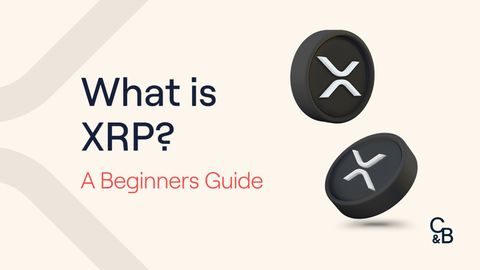
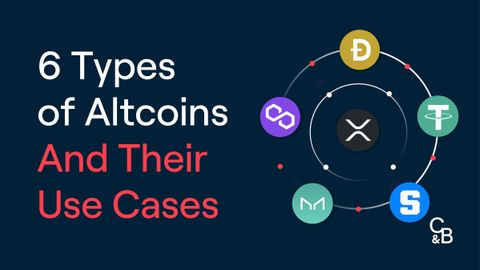
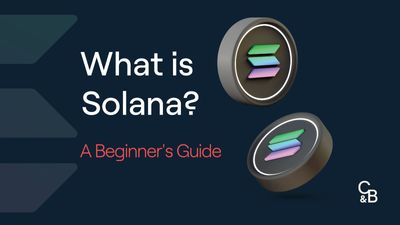
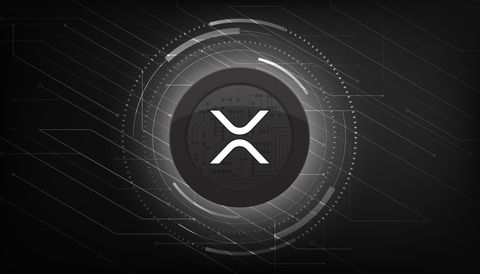
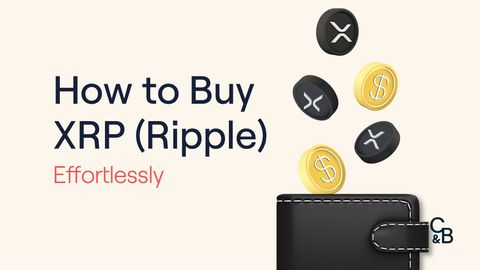
.png?u=https%3A%2F%2Fimages.ctfassets.net%2F4ua9vnmkuhzj%2F1PjLgWLIMUO2pzaZiPx5Dh%2F3348eab4e3ed605ef2edb43ec8e1f74f%2FBlog-Cover__15_.png&a=w%3D480%26h%3D270%26fm%3Dpng%26q%3D80&cd=2023-02-28T02%3A58%3A44.085Z)
